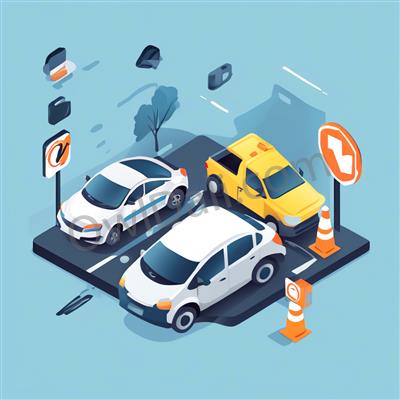Introduction To Roadside Assistance Coverage
Roadside Assistance Coverage is an essential service for drivers, providing help when vehicles face mechanical issues or other unforeseen problems on the road. This article explores the comprehensive aspects of roadside assistance coverage, backed by academic studies and industry research.
What Is Roadside Assistance Coverage?
Roadside assistance coverage is a form of vehicle insurance add-on or standalone service designed to aid drivers during vehicular breakdowns, accidents, or other emergency situations on the road. Services typically include tire changes, towing, fuel delivery, lockout services, and battery jump-starts.
The Components of Roadside Assistance Coverage
1. Towing Services: This includes the transportation of a malfunctioned or damaged vehicle to the nearest repair facility.
2. Fuel Delivery: If a vehicle runs out of fuel, the service providers deliver a small quantity of fuel to allow drivers to reach the nearest gas station.
3. Tire Changes: Assistance with flat tires, including the replacement with a spare tire.
4. Lockout Services: Helps drivers who are locked out of their vehicles either by retrieving their keys or unlocking the vehicle manually.
5. Battery Services: Jump-starting a dead car battery or providing a replacement battery.
6. Extrication/Wincing Services: Assistance in pulling out a vehicle when it is stuck in mud, sand, or snow.
Benefits of Roadside Assistance Coverage
Studies and industry reports indicate several benefits offered by roadside assistance coverage, including:
1. Peace of Mind: Ensuring safety during unexpected vehicle breakdowns.
2. Convenience: Providing drivers with reliable solutions quickly in precarious situations.
3. Cost Savings: Reducing out-of-pocket expenses for common roadside emergencies.
Impact on Driver´s Safety and Financial Aspects
Research by the National Highway Traffic Safety Administration (NHTSA) and other academic sources highlight the positive impact on driver safety and financial savings. Drivers with roadside assistance are less likely to be stranded in hazardous situations, reducing the potential for accidents and injuries.
Statistical Analysis
A study conducted in 2018 by the American Automobile Association (AAA) discovered that vehicles over six years old are twice as likely to experience a breakdown compared to new vehicles. The availability of roadside assistance services can mitigate risks and ensure that help is available promptly, thus enhancing overall road safety.
Cost-Benefit Analysis
A comprehensive cost-benefit analysis reveals that the small monthly or annual premiums paid for roadside assistance services can provide substantial financial benefits. For instance, a single emergency towing request could otherwise cost a significant amount, far exceeding the yearly cost of coverage.
Comparative Study of Roadside Assistance Providers
Insurance Companies
Traditional insurance providers like State Farm, Geico, and Progressive offer roadside assistance as add-ons, which can be bundled with other insurance policies. The integration of roadside assistance with primary insurance policies often ensures attractive pricing and comprehensive coverage.
Standalone Roadside Assistance Services
Companies like AAA, Allstate Motor Club, and Better World Club offer standalone roadside assistance plans. These services are renowned for their thorough coverage and additional perks like trip interruption benefits and discounts on travel-related services.
Coverage Plans and Pricing
A comparative study published in the Journal of Consumer Research in 2019 highlighted the variation in pricing and services offered by different providers. It emphasized the importance of consumers evaluating plans based on their specific needs, especially the frequency of travel and the type of vehicle owned.
Technological Innovations in Roadside Assistance
Recent advancements in telematics and mobile technology have revolutionized roadside assistance services. Many providers now offer mobile applications that enable users to request help through their smartphones, track service provider locations in real-time, and receive timely updates.
Smartphone Applications
Popular apps, such as the AAA Mobile app, provide a user-friendly interface to request roadside assistance, access travel discounts, and even get real-time traffic data. The integration of GPS technology ensures prompt service delivery and enhanced user experience.
Telematics and Predictive Maintenance
Telematics systems installed in modern vehicles can predict potential failures and notify service providers in advance. Studies in the IEEE Transactions on Intelligent Transportation Systems showcase how telematics can significantly improve response times and reduce the incidence of breakdowns.
Future Trends in Roadside Assistance
Autonomous Vehicles
With the advent of autonomous vehicles, the roadside assistance industry is poised to undergo significant changes. Autonomous cars will require specialized service providers capable of handling advanced technology issues such as sensor malfunctions or software problems.
On-Demand Services
The rising popularity of on-demand services has led to the emergence of various app-based roadside assistance startups. These services aim to offer even quicker response times and more flexibility compared to traditional providers.
Integration with AI and Machine Learning
Artificial Intelligence (AI) and Machine Learning (ML) can optimize service dispatch and route planning, ensuring efficient and timely assistance delivery. Research papers from MIT Media Lab demonstrate promising potential in leveraging AI for enhancing roadside assistance services.
Roadside assistance coverage is a valuable resource for drivers, offering peace of mind, convenience, and financial protection. Based on various academic research and industry analyses, it is evident that the inclusion of roadside assistance in vehicle insurance policies or as standalone services can significantly enhance driver safety and satisfaction.
The integration of advanced technologies, comparative assessments of providers, and continuous innovation in the field will shape the future of roadside assistance, making it even more efficient and user-focused. As we look ahead, the impact of these services is expected to grow, further solidifying their place as an essential aspect of modern vehicular support systems.

